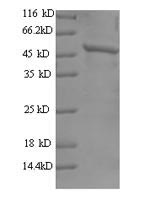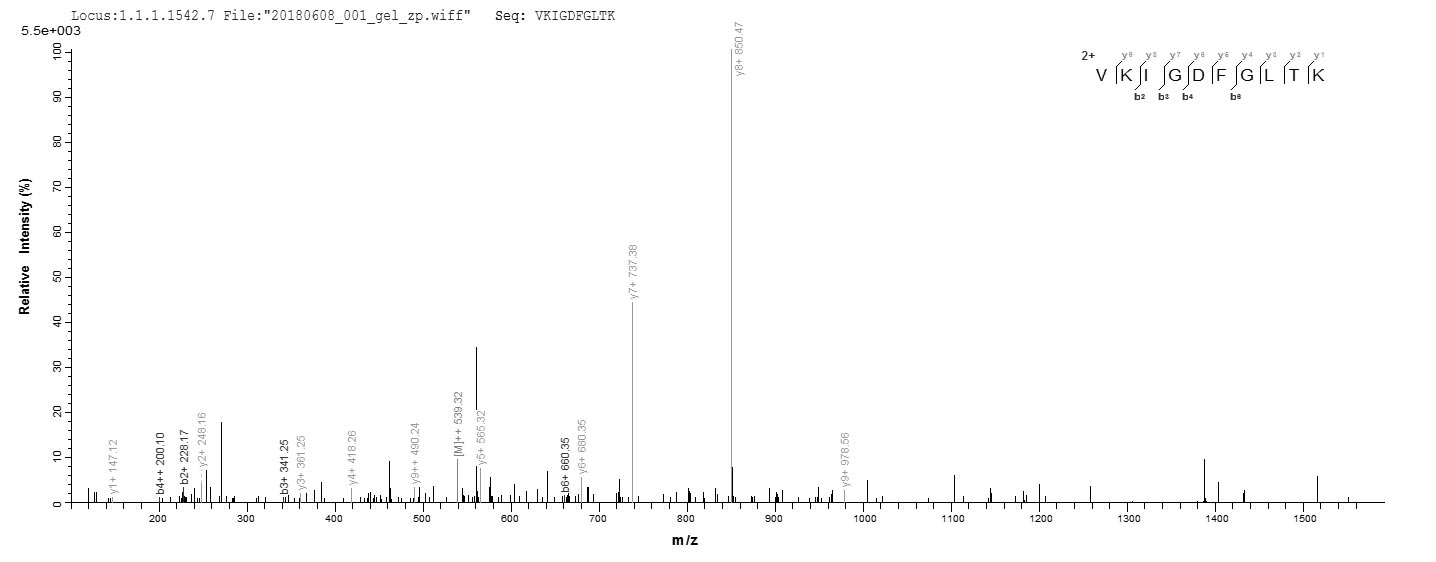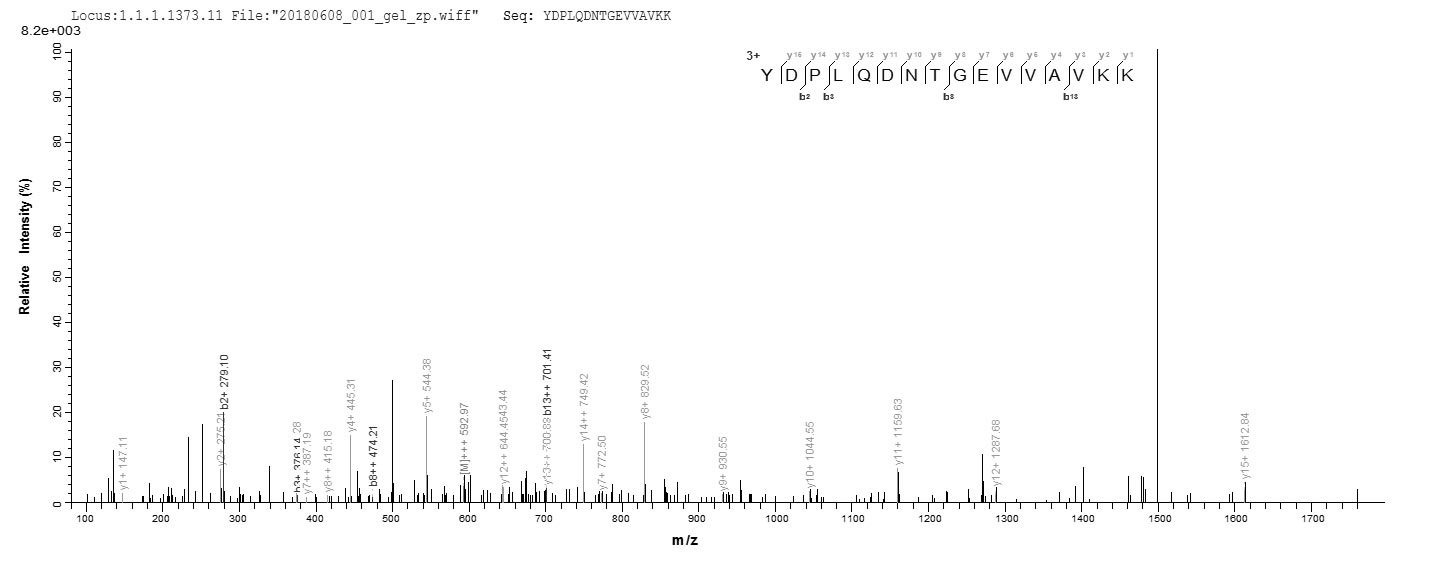The production of recombinant human JAK2 protein, featuring a 6xHis tag at the N-terminus, begins with cloning the JAK2 gene fragment (752-1132aa) into an expression vector. The N-terminal 6xHis tag gene is also co-inserted into the vector at the suitable site. After the transformation of the recombinant vector into competent E. coli cells, IPTG is used to induce high-level expression of the target protein. Following cell lysis, the JAK2 protein is purified via affinity chromatography. The purification process is followed by SDS-PAGE analysis, which consistently demonstrates a purity of over 90% of the recombinant JAK2 protein.
Human Tyrosine-protein kinase JAK2, a member of the Janus kinase family, plays a pivotal role in various cellular processes, particularly in hematopoiesis and immune response. Discovered in 1992, JAK2 is essential for signaling pathways initiated by several cytokines, including erythropoietin and thrombopoietin, which are crucial for red blood cell and platelet production, respectively [1][2]. JAK2 facilitates the phosphorylation of STAT proteins, thereby propagating signals from the cell surface to the nucleus, which is vital for gene expression regulation [1][2].
In addition to its role in hematopoiesis, JAK2 is implicated in various cancers, where its signaling pathways can promote cell survival and proliferation. Studies have shown that JAK2 interacts with oncogenic proteins like Bcr-Abl, enhancing the survival of leukemic cells [3][4]. Its mutations and aberrant activation are central to the pathogenesis of several hematological disorders, making it a key target for therapeutic intervention.
References:
[1] J. Ihle and D. Gilliland, Jak2: normal function and role in hematopoietic disorders, Current Opinion in Genetics & Development, vol. 17, no. 1, p. 8-14, 2007. https://doi.org/10.1016/j.gde.2006.12.009
[2] S. Verstovsek, Therapeutic potential of jak2 inhibitors, The Journal of Oncopathology, vol. 1, no. 1, p. 76-79, 2013. https://doi.org/10.13032/tjop.2052-5931.100024
[3] A. Samanta, S. Chakraborty, Y. Wang, E. Schlette, E. Reddy, & R. Arlinghaus, Destabilization of bcr-abl/jak2 network by a jak2/abl kinase inhibitor on044580 overcomes drug resistance in blast crisis chronic myelogenous leukemia (cml), Genes & Cancer, vol. 1, no. 4, p. 346-359, 2010. https://doi.org/10.1177/1947601910372232
[4] S. Chakraborty, X. Leng, B. Perazzona, X. Sun, Y. Lin, & R. Arlinghaus, Combination of jak2 and hsp90 inhibitors: an effective therapeutic option in drug-resistant chronic myelogenous leukemia, Genes & Cancer, vol. 7, no. 5-6, p. 201-208, 2016. https://doi.org/10.18632/genesandcancer.111








